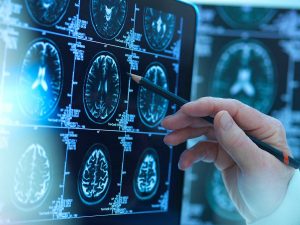The largest study of its kind finds that children can carry exceedingly high amounts of the new coronavirus, even in the absence of symptoms.
Researchers say that could make them ideal “silent spreaders” of COVID-19, throwing the safety of reopening schools into question.
“If schools were to reopen fully without necessary precautions, it is likely that children will play a larger role in this pandemic,” said study senior author Dr. Alessio Fasano. He directs the Mucosal Immunology and Biology Research Center at Massachusetts General Hospital in Boston.
The study of 192 children and young adults — newborns to 22-year-olds — found that 49 tested positive for SARS-CoV-2 and another 18 showed symptoms of COVID-19 illness.
What’s more, infected children harbored very high levels of virus within their airways — viral loads exceeding those of very sick adult patients cared for in intensive care units.
That’s important, because the ability of an infected person to transmit SARS-CoV-2 rises with the amount of virus in their system.
“I was surprised by the high levels of virus we found in children of all ages, especially in the first two days of infection,” said study lead author Dr. Lael Yonker, director of the MGH Cystic Fibrosis Center.
“I was not expecting the viral load to be so high. You think of a hospital, and of all of the precautions taken to treat severely ill adults, but the viral loads of these hospitalized patients are significantly lower than a ‘healthy child’ who is walking around with a high SARS-CoV-2 viral load,” she said in a hospital news release.
Fasano believes the role of kids in spreading COVID-19 may have been underestimated.
“During this COVID-19 pandemic, we have mainly screened symptomatic subjects, so we have reached the erroneous conclusion that the vast majority of people infected are adults,” he said in the release. “However, our results show that kids are not protected against this virus. We should not discount children as potential spreaders for this virus.”
The Boston team agreed that in the vast majority of cases, children infected with the new coronavirus will not come down with severe illness. The real danger lies in their mingling with more vulnerable adults.
In the new study, more than half of infected children came from low-income communities, where homes often include multiple generations — including grandparents highly vulnerable to COVID-19.
The new findings come as many schools reopen for the fall. But the researchers believe in-person learning should only occur under the strictest guidelines.
Because so many kids with high viral loads show no symptoms, relying on body temperature checks or symptom monitoring won’t be enough to keep teachers and other staff safe, Fasano and Yonker said.
Instead, random testing of students and a host of safety measures — mask wearing when feasible, social distancing, hand-washing, and a combo of remote and in-person learning — could help suppress the spread of COVID-19 within schools.
“This study provides much-needed facts for policymakers to make the best decisions possible for schools, day care centers and other institutions that serve children,” Fasano said. “Kids are a possible source of spreading this virus, and this should be taken into account in the planning stages for reopening schools.”
Two infectious disease experts who weren’t connected to the study said it provides valuable insight.
Dr. Amesh Adalja, a senior scholar at the Johns Hopkins Center for Health Security in Baltimore, said the findings run counter to other reports that have suggested kids aren’t big spreaders of the virus.
“The study adds to the mystery of children and their role in transmission,” Adalja said. “The fact that they have such high viral loads and yet haven’t driven outbreaks remains puzzling as day care centers have been open throughout the pandemic and not linked to outbreaks.”
Dr. Dolly Sharma directs pediatric infectious diseases at Staten Island University Hospital in New York City. She agreed that “silent, asymptomatic carriage and transmission of SARS-CoV-2 by children remains a significant concern in relation to reopening of schools, day care centers and universities.
“Aside from potential risk of transmission throughout households, the finding of high viral loads being carried by children raises similar concerns for teachers, staff and other educational employees who may also be considered high-risk and, if infected, have potential to carry the virus home to other at-risk individuals,” Sharma said.
The study was published Aug. 20 in The Journal of Pediatrics.
More information
The U.S. Centers for Disease Control and Prevention has more on the new coronavirus.
Source: HealthDay
Copyright © 2025 HealthDay. All rights reserved.

















